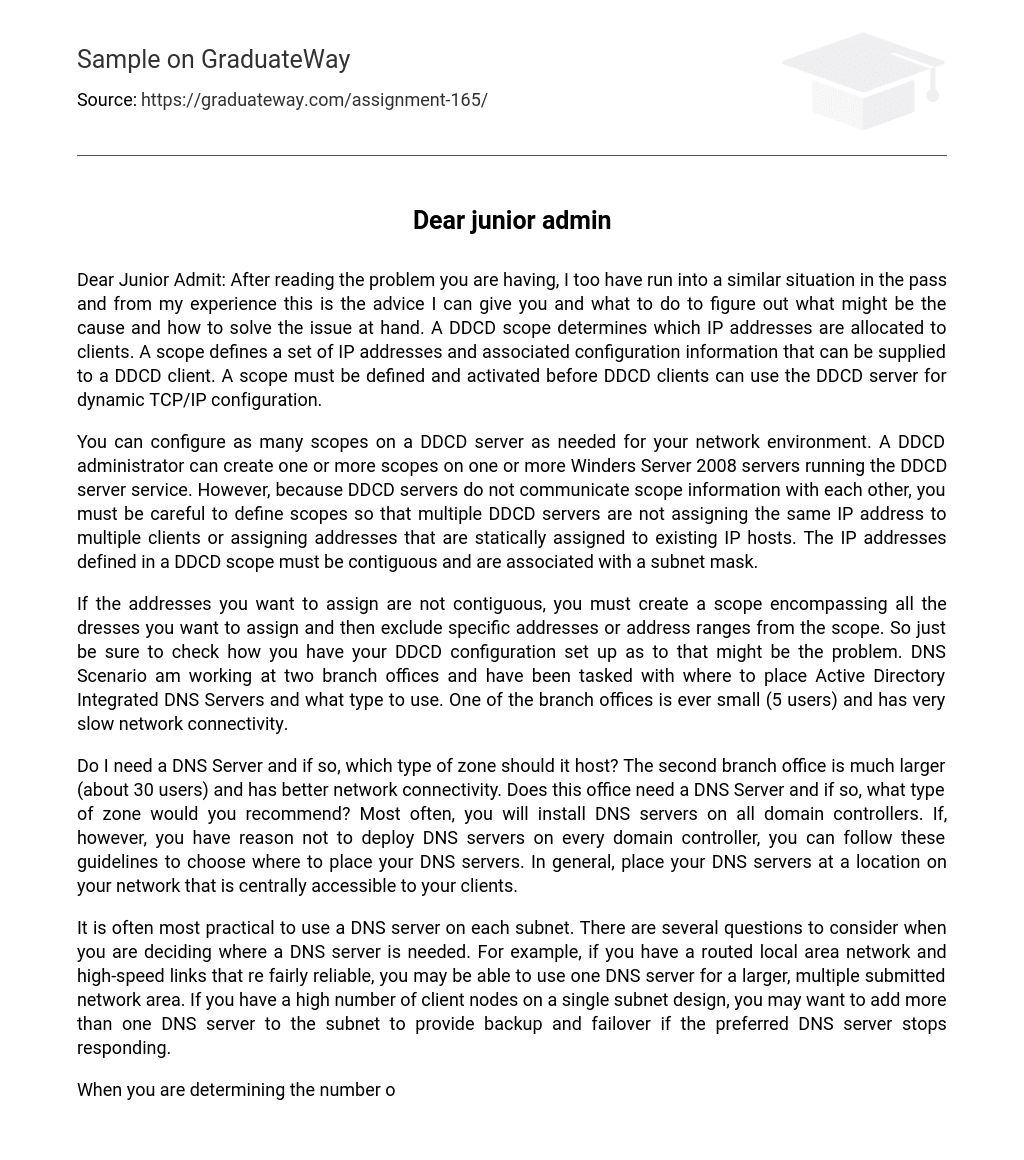Dear Junior Admit: After reading the problem you are having, I too have run into a similar situation in the pass and from my experience this is the advice I can give you and what to do to figure out what might be the cause and how to solve the issue at hand. A DDCD scope determines which IP addresses are allocated to clients. A scope defines a set of IP addresses and associated configuration information that can be supplied to a DDCD client. A scope must be defined and activated before DDCD clients can use the DDCD server for dynamic TCP/IP configuration.
You can configure as many scopes on a DDCD server as needed for your network environment. A DDCD administrator can create one or more scopes on one or more Winders Server 2008 servers running the DDCD server service. However, because DDCD servers do not communicate scope information with each other, you must be careful to define scopes so that multiple DDCD servers are not assigning the same IP address to multiple clients or assigning addresses that are statically assigned to existing IP hosts. The IP addresses defined in a DDCD scope must be contiguous and are associated with a subnet mask.
If the addresses you want to assign are not contiguous, you must create a scope encompassing all the dresses you want to assign and then exclude specific addresses or address ranges from the scope. So just be sure to check how you have your DDCD configuration set up as to that might be the problem. DNS Scenario am working at two branch offices and have been tasked with where to place Active Directory Integrated DNS Servers and what type to use. One of the branch offices is ever small (5 users) and has very slow network connectivity.
Do I need a DNS Server and if so, which type of zone should it host? The second branch office is much larger (about 30 users) and has better network connectivity. Does this office need a DNS Server and if so, what type of zone would you recommend? Most often, you will install DNS servers on all domain controllers. If, however, you have reason not to deploy DNS servers on every domain controller, you can follow these guidelines to choose where to place your DNS servers. In general, place your DNS servers at a location on your network that is centrally accessible to your clients.
It is often most practical to use a DNS server on each subnet. There are several questions to consider when you are deciding where a DNS server is needed. For example, if you have a routed local area network and high-speed links that re fairly reliable, you may be able to use one DNS server for a larger, multiple submitted network area. If you have a high number of client nodes on a single subnet design, you may want to add more than one DNS server to the subnet to provide backup and failover if the preferred DNS server stops responding.
When you are determining the number of DNS servers that you need, assess the effect of zone transfers and DNS query traffic on slower links in your network. Although DNS is designed to help reduce broadcast traffic between local subnets, it does create some traffic between servers and clients that should be reviewed, articulacy when the DNS servers are in local area network (LANA) or wide area network (WAN) environments with complex routing. Consider the effects of zone transfer over slower speed links, such as those that are typically used for a WAN connection.
Although the DNS Server service supports incremental zone transfers and DNS clients and servers can cache recently used names, traffic considerations are sometimes still an issue, particularly when Dynamic Host Configuration Protocol (DDCD) leases are shortened and, as a result, dynamic updates in DNS are performed more frequently. One option for dealing with remote locations on WAN links is to set up a DNS server at these locations to provide caching-only DNS service.
With most installations, you should have at least two server computers hosting each of your DNS zones, for fault tolerance. When you are making any final determinations about the number of servers to use, first assess the level of fault tolerance that is appropriate for your network. When only a single DNS server is used on a small LANA in a single-subnet environment, you can configure the single server to simulate both the primary and secondary servers for a zone.





